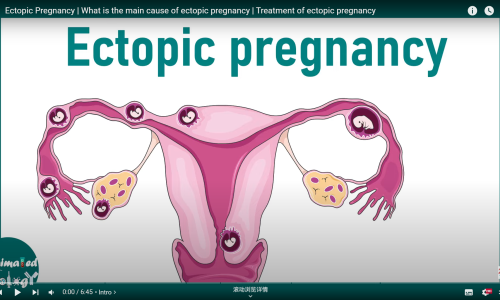This advanced course bridges **developmental biology, molecular genetics, and clinical medicine**, offering a comprehensive exploration of embryonic development, regeneration, and reproductive pathology. Designed for **medical students (USMLE-focused), developmental biologists, and researchers**, the curriculum integrates fundamental developmental processes with their clinical correlates, including **ectopic pregnancy, placental disorders, and diagnostic techniques**.
—
### **Course Modules:**
#### **Section 1: Fertilization & Early Developmental Mechanisms**
– **Fertilization in Sea Urchins**
– Model system for **external fertilization**, calcium signaling, and cortical reaction.
– **Neurulation & Neural Tube Defects**
– **Neurogenesis**, neural tube folding, and clinical correlates (e.g., spina bifida).
– **Genomic Imprinting**
– Molecular basis of parent-specific gene silencing (e.g., Igf2/H19) and its role in development.
#### **Section 2: Regeneration & Stem Cell Biology**
– **Planaria Regeneration**
– Stem cell-driven **whole-body regeneration** and positional memory.
– **Salamander Limb Regeneration (Epimorphosis)**
– Blastema formation and Wnt/FGF signaling in limb regrowth.
– **Hydra Regeneration (Morphallaxis)**
– Tissue plasticity and transdifferentiation mechanisms.
#### **Section 3: Molecular Regulation of Development**
– **Enhancers & Gene Expression**
– **Cis-regulatory elements**, enhancer-promoter loops, and spatial gene control.
– **Apoptosis in Development**
– Physiological (e.g., digit formation) vs. pathological apoptosis; caspase pathways.
#### **Section 4: Clinical Embryology & Reproductive Medicine**
– **Ectopic Pregnancy**
– Causes (tubal damage, PID), treatments (methotrexate/surgery), and USMLE highlights.
– **Placenta Previa**
– Risk factors, painless bleeding, and management (cesarean delivery).
– **Amniocentesis & Prenatal Diagnostics**
– Techniques, indications (aneuploidy screening), and risks.
#### **Section 5: Cellular Aging & USMLE Focus**
– **Cellular Senescence**
– Telomere attrition, oxidative stress, and links to aging/disease (USMLE Step 1).
—
### **Key Features:**
– **Clinical Integration:** Connects developmental biology to **OB/GYN, surgery, and genetics**.
– **Model Organisms:** Sea urchins, planaria, and salamanders illustrate conserved principles.
– **USMLE High-Yield:** Focused modules on **placenta previa, amniocentesis, and neural tube defects**.
– **Molecular Depth:** Covers **epigenetics (imprinting), apoptosis pathways, and regenerative signaling**.
**Target Audience:**
– Medical students preparing for **USMLE Step 1**
– Graduate students in **developmental biology or regenerative medicine**
– Researchers studying **stem cells, aging, or reproductive health**
—
### **Enrollment Benefits:**
– Master **developmental pathways** with clinical applications.
– Understand **regeneration** for potential therapeutic insights.
– Ace **USMLE embryology questions** with integrated pathology.
**Enroll now to decode the language of development!**
—
**Note:** The course balances **basic science (e.g., enhancer biology) and clinical content (e.g., ectopic pregnancy)**. Let me know if you’d like additional emphasis on specific areas!
Curriculum
- 1 Section
- 12 Lessons
- 12 Weeks
- Developmental biology and Embryology12
- 1.1Ectopic Pregnancy | What is the main cause of ectopic pregnancy | Treatment of ectopic pregnancy6 Minutes
- 1.2Fertilization in sea urchin | external fertilization in sea urchin | Developmental biology12 Minutes
- 1.3Enhancer and eukaryotic gene expression regulation | Cis regulatory elements |Enhancer promoter loop15 Minutes
- 1.4Regeneration in Planaria | Molecular mechanism of regeneration | Stem cell mediated regeneration16 Minutes
- 1.5Limb regeneration in salamanders | Epimorphosis | Developmental biology15 Minutes
- 1.6Regeneration in Hydra | Morphallaxis | Dev bio17 Minutes
- 1.7Neurulation | Neurogenesis | Neural tube folding | USMLE | Neurology17 Minutes
- 1.8Cellular aging | Cellular Aging and Genomic Instability: Definition & Overview – Aging | USMLE step113 Minutes
- 1.9Apoptosis | Apoptosis in Pathological and Physiological context | Molecular pathway of apoptosis16 Minutes
- 1.10Genomic Imprinting | How genomic Imprinting works at molecular level ?7 Minutes
- 1.11Placenta Previa | Cause , symptoms and treatment of Placenta previa | USMLE step 17 Minutes
- 1.12Amniocentesis | Diagnostics: Ultrasound, Chorionic Villus Sampling, Amniocentesis | USMLE step 15 Minutes
Instructor

تحميل مجاني-ربح المال بسرعة-اختراق مجاني-مشاهدة بدون تسجيل-نتائج مضمونة-تنزيل مباشر-أفضل طريقة للربح-مفاتيح تفعيل-免费下载-破解软件-快速赚钱-无需注册-今すぐクリック-すぐにお金を稼ぐ-秘密テクニック-تحميل مجاني-ربح المال بسرعة-اختراق مجاني-مشاهدة بدون تسجيل-نتائج مضمونة-تنزيل مباشر-أفضل طريقة للربح-مفاتيح تفعيل-免费下载-破解软件-快速赚钱-无需注册-今すぐクリック-すぐにお金を稼ぐ-秘密テクニック-تحميل مجاني-ربح المال بسرعة-اختراق مجاني-مشاهدة بدون تسجيل-نتائج مضمونة-تنزيل مباشر-أفضل طريقة للربح-مفاتيح تفعيل-免费下载-破解软件-快速赚钱-无需注册-今すぐクリック-すぐにお金を稼ぐ-秘密テクニック-تحميل مجاني-ربح المال بسرعة-اختراق مجاني-مشاهدة بدون تسجيل-نتائج مضمونة-تنزيل مباشر-أفضل طريقة للربح-مفاتيح تفعيل-免费下载-破解软件-快速赚钱-无需注册-今すぐクリック-すぐにお金を稼ぐ-秘密テクニック-تحميل مجاني-ربح المال بسرعة-اختراق مجاني-مشاهدة بدون تسجيل-نتائج مضمونة-تنزيل مباشر-أفضل طريقة للربح-مفاتيح تفعيل-免费下载-破解软件-快速赚钱-无需注册-今すぐクリック-すぐにお金を稼ぐ-秘密テクニック-تحميل مجاني-ربح المال بسرعة-اختراق مجاني-مشاهدة بدون تسجيل-نتائج مضمونة-تنزيل مباشر-أفضل طريقة للربح-مفاتيح تفعيل-免费下载-破解软件-快速赚钱-无需注册-今すぐクリック-すぐにお金を稼ぐ-秘密テクニック-تحميل مجاني-ربح المال بسرعة-اختراق مجاني-مشاهدة بدون تسجيل-نتائج مضمونة-تنزيل مباشر-أفضل طريقة للربح-مفاتيح تفعيل-免费下载-破解软件-快速赚钱-无需注册-今すぐクリック-すぐにお金を稼ぐ-秘密テクニック-تحميل مجاني-ربح المال بسرعة-اختراق مجاني-مشاهدة بدون تسجيل-نتائج مضمونة-تنزيل مباشر-أفضل طريقة للربح-مفاتيح تفعيل-免费下载-破解软件-快速赚钱-无需注册-今すぐクリック-すぐにお金を稼ぐ-秘密テクニック-تحميل مجاني-ربح المال بسرعة-اختراق مجاني-مشاهدة بدون تسجيل-نتائج مضمونة-تنزيل مباشر-أفضل طريقة للربح-مفاتيح تفعيل-免费下载-破解软件-快速赚钱-无需注册-今すぐクリック-すぐにお金を稼ぐ-秘密テクニック-تحميل مجاني-ربح المال بسرعة-اختراق مجاني-مشاهدة بدون تسجيل-نتائج مضمونة-تنزيل مباشر-أفضل طريقة للربح-مفاتيح تفعيل-免费下载-破解软件-快速赚钱-无需注册-今すぐクリック-すぐにお金を稼ぐ-秘密テクニック-تحميل مجاني-ربح المال بسرعة-اختراق مجاني-مشاهدة بدون تسجيل-نتائج مضمونة-تنزيل مباشر-أفضل طريقة للربح-مفاتيح تفعيل-免费下载-破解软件-快速赚钱-无需注册-今すぐクリック-すぐにお金を稼ぐ-秘密テクニック-تحميل مجاني-ربح المال بسرعة-اختراق مجاني-مشاهدة بدون تسجيل-نتائج مضمونة-تنزيل مباشر-أفضل طريقة للربح-مفاتيح تفعيل-免费下载-破解软件-快速赚钱-无需注册-今すぐクリック-すぐにお金を稼ぐ-秘密テクニック-تحميل مجاني-ربح المال بسرعة-اختراق مجاني-مشاهدة بدون تسجيل-نتائج مضمونة-تنزيل مباشر-أفضل طريقة للربح-مفاتيح تفعيل-免费下载-破解软件-快速赚钱-无需注册-今すぐクリック-すぐにお金を稼ぐ-秘密テクニック-تحميل مجاني-ربح المال بسرعة-اختراق مجاني-مشاهدة بدون تسجيل-نتائج مضمونة-تنزيل مباشر-أفضل طريقة للربح-مفاتيح تفعيل-免费下载-破解软件-快速赚钱-无需注册-今すぐクリック-すぐにお金を稼ぐ-秘密テクニック-تحميل مجاني-ربح المال بسرعة-اختراق مجاني-مشاهدة بدون تسجيل-نتائج مضمونة-تنزيل مباشر-أفضل طريقة للربح-مفاتيح تفعيل-免费下载-破解软件-快速赚钱-无需注册-今すぐクリック-すぐにお金を稼ぐ-秘密テクニック-تحميل مجاني-ربح المال بسرعة-اختراق مجاني-مشاهدة بدون تسجيل-نتائج مضمونة-تنزيل مباشر-أفضل طريقة للربح-مفاتيح تفعيل-免费下载-破解软件-快速赚钱-无需注册-今すぐクリック-すぐにお金を稼ぐ-秘密テクニック-تحميل مجاني-ربح المال بسرعة-اختراق مجاني-مشاهدة بدون تسجيل-نتائج مضمونة-تنزيل مباشر-أفضل طريقة للربح-مفاتيح تفعيل-免费下载-破解软件-快速赚钱-无需注册-今すぐクリック-すぐにお金を稼ぐ-秘密テクニック-تحميل مجاني-ربح المال بسرعة-اختراق مجاني-مشاهدة بدون تسجيل-نتائج مضمونة-تنزيل مباشر-أفضل طريقة للربح-مفاتيح تفعيل-免费下载-破解软件-快速赚钱-无需注册-今すぐクリック-すぐにお金を稼ぐ-秘密テクニック-تحميل مجاني-ربح المال بسرعة-اختراق مجاني-مشاهدة بدون تسجيل-نتائج مضمونة-تنزيل مباشر-أفضل طريقة للربح-مفاتيح تفعيل-免费下载-破解软件-快速赚钱-无需注册-今すぐクリック-すぐにお金を稼ぐ-秘密テクニック-تحميل مجاني-ربح المال بسرعة-اختراق مجاني-مشاهدة بدون تسجيل-نتائج مضمونة-تنزيل مباشر-أفضل طريقة للربح-مفاتيح تفعيل-免费下载-破解软件-快速赚钱-无需注册-今すぐクリック-すぐにお金を稼ぐ-秘密テクニック-تحميل مجاني-ربح المال بسرعة-اختراق مجاني-مشاهدة بدون تسجيل-نتائج مضمونة-تنزيل مباشر-أفضل طريقة للربح-مفاتيح تفعيل-免费下载-破解软件-快速赚钱-无需注册-今すぐクリック-すぐにお金を稼ぐ-秘密テクニック-
